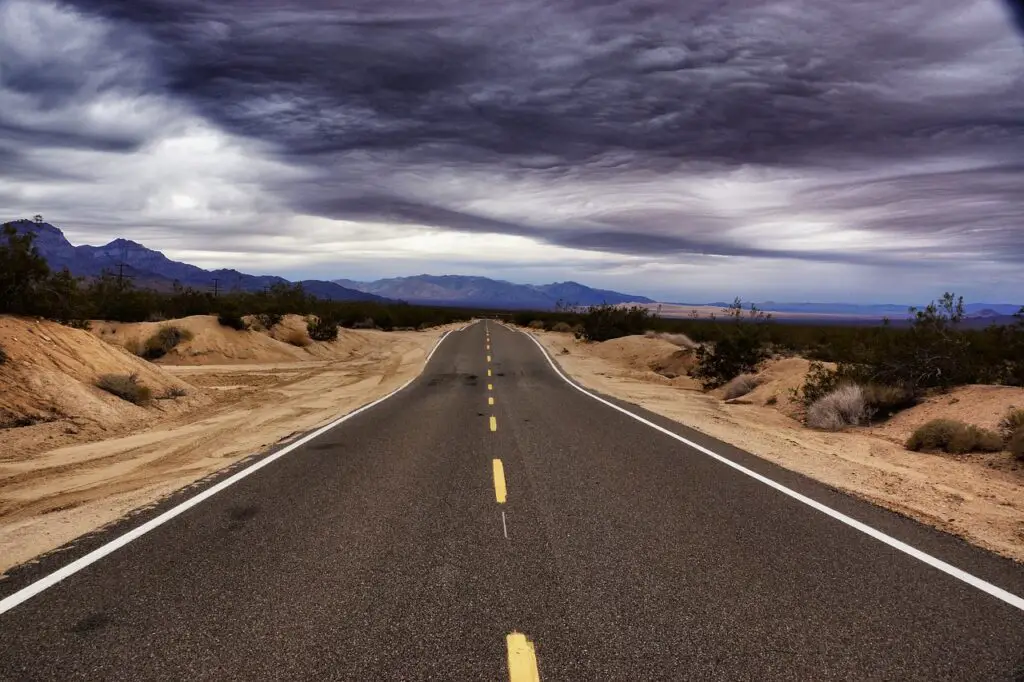
Intermodal Transportation in Chicago serves as a dynamic nexus for freight movement and urban innovation. Chicago’s strategic geographic location and robust connectivity among rail, road, and air networks have driven its evolution into a critical hub for both national and international logistics.
Over the past decades, the city has harnessed advanced technologies and public–private partnerships to modernize its transportation hubs, reduce handling times, and improve cost efficiency. The use of standardized containers enables seamless transitions between transportation modes, ensuring that cargo experiences minimal delays and handling damage.
This integrated logistics approach not only bolsters commercial competitiveness but also supports economic growth by keeping supply chains agile and responsive to market demands. In today’s fast-paced economic environment, reliable freight movement is indispensable.
This guide covers the essential aspects of Chicago’s multimodal transportation—from foundational concepts and core infrastructure to economic impacts and forward-looking trends. Whether you are a logistics professional, a policymaker, or simply a curious observer of urban development, this article provides detailed insights and strategic analysis.
As you delve into each section, you will discover the present-day excellence of Chicago’s freight network while gaining a perspective on how technology and sustainability are reshaping modern freight corridors.
Table of Contents
ToggleUnderstanding Intermodal Transportation in Chicago

Definition and Core Concepts
Intermodal transportation is the coordinated movement of cargo using multiple transportation modes without the need to handle the freight during transitions. This system relies heavily on standardized containers, advanced tracking systems, and synchronized scheduling.
These elements facilitate swift transfers between trucks, trains, ships, and aircraft. In Chicago, these principles are executed with high precision. State-of-the-art logistics centers and interconnected schedules work in tandem so that millions of tons of cargo move efficiently each year.
At its core, this multimodal approach emphasizes connectivity between different transportation systems. By reducing the friction inherent in independent shipping methods, Chicago transforms a complex series of journeys into one cohesive process.
This model not only enhances operational efficiency but also supports regional and global trade. Ultimately, the intermodal system is more than a convenience—it is a transformative engine driving both urban and economic development.
Chicago’s Central Role in National and Global Transport
Chicago’s prominence as a freight hub is deeply rooted in its strategic geographic position at the crossroads of vital trade corridors. The city’s extensive rail systems, major interstate highways, and one of the nation’s busiest airports form an interconnected network capable of handling huge volumes of cargo.
Strategic investments in modernizing these transport links have enabled Chicago to efficiently manage domestic and international shipments. Continuous upgrades in local infrastructure amplify the city’s capacity to meet rising market demands.
This relentless pursuit of improvement secures Chicago’s legacy as a transportation powerhouse and ensures its continued leadership in global trade dynamics.
Infrastructure and Operational Components

Key Transportation Hubs in Chicago
Chicago’s intermodal strength is anchored by a network of strategically located transportation hubs. Massive rail yards serve as the backbone for long-haul shipments, while expansive truck terminals facilitate last-mile distribution.
Busy freight airports further complement these facilities, ensuring that cargo is transferred seamlessly between modes. Each hub is equipped with sophisticated communication systems and real-time data analytics that streamline scheduling and coordination.
Continuous investments in automation and modernized container handling have solidified Chicago’s role as a leader in transportation logistics. Moreover, these hubs double as incubators for technological innovation, setting new benchmarks for the global logistics industry.
Integration of Rail, Road, and Air Networks
The efficiency of Chicago’s intermodal system hinges on the flawless integration of its rail, road, and air networks. Long-haul rail services offer cost-effective solutions for moving bulk freight, while the city’s sprawling highways ensure flexibility for short-distance deliveries.
Air freight plays a crucial role in handling smaller, time-sensitive shipments, connecting Chicago to international markets. Digital platforms serve as the bridge linking these varied modes. They provide real-time tracking and monitoring of cargo, ensuring all segments of the transportation chain operate in harmony.
This integration results in improved route optimization, risk mitigation, and overall reliability in shipment delivery.
Technological Innovations in Transportation
Recent technological advancements have transformed Chicago’s intermodal transportation landscape. Innovations such as GPS tracking, automated loading systems, and advanced analytics software enhance the precision and reliability of cargo movement.
Digital dashboards now empower stakeholders—from shippers to receivers—with real-time data to monitor shipments and address disruptions promptly. Emerging trends in artificial intelligence and machine learning are beginning to influence route planning and predictive maintenance.
These cutting-edge technologies allow logistics operators to anticipate equipment issues before they occur, reducing downtime significantly. Chicago’s focus on innovation is a testament to its commitment to developing a flexible and efficient intermodal network that can tackle future challenges head-on.
Economic Impacts and Environmental Considerations
Economic Growth and Trade Facilitation
Intermodal transportation is a vital cornerstone of Chicago’s economic engine. The interconnection of different transport modes directly contributes to reducing operational costs and enhancing supply chain reliability. This efficiency attracts robust investment and stimulates overall economic growth.
Improved freight movement minimizes delays and reduces financial losses connected to logistical disruptions. As a result, local businesses—from manufacturing to retail—benefit substantially from Chicago’s reliable infrastructure.
This dependable system not only supports local enterprises but also serves as a critical pillar for national economic stability. Its ability to maintain a smooth flow of raw materials and finished goods further underscores its significance in global trade.
Sustainable Practices and Environmental Benefits
One of the principal benefits of intermodal transportation is its positive environmental impact. Shifting large volumes of freight onto more energy-efficient modes, like rail, significantly lowers greenhouse gas emissions compared to road transport.
Investments in green technologies, such as electric vehicles for last-mile delivery and optimally designed freight containers, help minimize the overall carbon footprint. These environmentally friendly initiatives contribute to cleaner air, reduced fuel consumption, and a healthier urban atmosphere.
Chicago’s intermodal system proves that economic growth can coexist with responsible environmental stewardship. This dual approach establishes a sustainable model for urban transport systems worldwide.
Challenges and Opportunities

Infrastructure Bottlenecks and Policy Barriers
Despite its many strengths, Chicago’s intermodal system faces distinct challenges. Aging infrastructure in some nodes can create bottlenecks, slowing down the overall flow of goods. Outdated facilities and systems may struggle to meet the demands of a rapidly growing metropolitan freight network.
Furthermore, regulatory policies that have not kept pace with modern technological advances can impede efforts to optimize logistics. Addressing these challenges requires coordinated efforts between government bodies, private sector partners, and industry stakeholders.
Continuous investment and targeted policy reform are essential to ensure that the infrastructure remains cutting-edge and fully compatible with contemporary logistics needs.
Investment in Technological Upgrades and Infrastructure
Overcoming operational barriers demands proactive investment in technology and infrastructure. Financial and strategic investments in real-time monitoring systems, automation, and predictive analytics can dramatically enhance efficiency across the network.
Such advancements drive down operational costs while supporting long-term economic growth. Public–private partnerships are already laying the groundwork for transformative projects, modernizing aging facilities, and streamlining logistical processes.
These collaborations pave the way for a resilient and future-proof logistics network that remains adaptive to evolving market and technological trends.
Collaborative Initiatives and Future Trends
Collaboration is crucial for fostering innovation in intermodal transportation. Chicago has seen numerous initiatives where industry experts, technology providers, and policymakers work together to devise integrated logistics solutions.
Such collaborative ventures lead to pilot projects, joint research, and the adoption of best practices across the industry. Future trends—such as artificial intelligence, the expansion of the Internet of Things (IoT), and sustainable energy solutions—are expected to further refine the intermodal landscape.
With an eye toward the future, Chicago is well-positioned to adapt to these emerging trends, setting new standards for efficiency, sustainability, and operational excellence.
Case Studies and Strategic Insights

Successful Intermodal Projects in Chicago
Several projects in Chicago have showcased the immense potential of intermodal transportation. Modern freight consolidation centers and revamped rail yards have yielded significant gains in operational efficiency and cost reduction.
These projects demonstrate how digital tracking systems and automation reduce container dwell times and overall handling costs. They serve as powerful examples of how targeted modernization efforts can transform logistical processes.
The success stories emerging from these initiatives provide valuable lessons on how investments in infrastructure and technology can drive substantial improvements in freight management.
Lessons Learned from Implementation
Critical insights have emerged from analyzing Chicago’s intermodal projects. The importance of flexibility in operations—adapting to changing market demands and technological shifts—is vital for long-term success. Regular performance assessments and timely infrastructure upgrades have proven indispensable in maintaining a competitive advantage.
Furthermore, these projects highlight that innovation is an ongoing process rather than a one-time investment. Continuous advancements in automation and real-time management technology yield enduring benefits.
Such lessons reinforce that every link in the supply chain must contribute collectively to overall efficiency and operational resilience.
Strategies for Future Developments
Building on recent successes and ongoing research, several strategies have emerged to enhance intermodal transportation further in Chicago. Emphasizing sustainable practices, strengthening public–private partnerships, and streamlining regulatory processes are key for future development.
Investment in research and development will continue to play a pivotal role in adapting to emerging trends and new technologies. Policy reforms that encourage green technology adoption and facility modernization are essential to maintain growth momentum.
Leveraging data-driven insights along with robust collaborative initiatives will help Chicago set a new global standard for transportation efficiency and environmental stewardship.
Future Outlook: The Road Ahead for Intermodal Transportation

Innovative Trends and Smart Solutions
The future of Intermodal Transportation in Chicago hinges on the adoption of innovative trends and smart solutions. Emerging technologies such as artificial intelligence, machine learning, and the Internet of Things (IoT) are poised to revolutionize freight management.
These innovations aim to optimize route planning, enable predictive maintenance, and improve load management. As digital tools become more deeply integrated, Chicago’s freight network is poised to become even more agile and responsive to unforeseen challenges.
Moreover, the ongoing advancements in automation and data analytics promise to further reduce transit times while enhancing overall operational resilience.
Expanding the Traveler Experience
Beyond bolstering the freight industry, Chicago’s advanced transport system also has a profound impact on personal travel and tourism. Travelers looking to plan well-organized trips can utilize a personal travel planner that offers customized itineraries based on local expertise.
Comprehensive travel tips are available to help navigate Chicago’s transit and to uncover hidden local gems. For dining recommendations, services like Nearest Restaurant to You enable travelers to locate quality eateries quickly.
For those seeking culinary adventures, exploring regional flavors through Wisconsin’s Must-Try Dishes can add a delicious twist to your journey. If your travels take you beyond Chicago, regional guides such as Iowa Travel Hacks will offer valuable advice. Planning a broader excursion? Consider a South Dakota Road Trip or a detailed North Dakota Itinerary.
Female travelers can benefit from insights provided by Solo Female Travel and Safety Tips for Women. Budget-minded explorers may also find useful strategies on how to save. Additionally, convenient booking of travel insurance from SafetyWing further enriches the travel experience. For a broader tour of the region, a dedicated guide to the Midwest USA encapsulates the unique charm of this area.
Conclusion
Intermodal Transportation in Chicago stands as a cornerstone of the city’s logistics and economic framework. By seamlessly integrating rail, road, and air networks, Chicago has built a transportation system that not only accelerates the movement of goods but also underpins sustainable economic growth.
Strategic investments in technology and infrastructure—exemplified by advanced automation, digital tracking, and strong public–private partnerships—have positioned Chicago at the forefront of modern freight management. While challenges persist, such as aging infrastructure and evolving regulatory frameworks, coordinated efforts and ongoing investments are paving the way for meaningful improvements.
Lessons from groundbreaking projects reveal that flexibility, continuous innovation, and cross-sector collaboration are critical for long-term success. As Chicago continues to modernize its systems and embrace emerging technologies, its intermodal network remains a formidable engine of commerce, growth, and environmental stewardship.
The future of Chicago’s freight and travel experience lies in initiatives that are both robust and forward-thinking. This strategic guide underscores that integrating technological advancements with sustainable practices not only enhances operational efficiency but also enriches the traveler’s experience—ensuring that the city remains a shining example of modern logistics excellence.



